
Suzhou, China. Also known as the “Venice of China” or “Venice of the East” for its many canals and winding waterways.
The city of Suzhou, China is a delicious anomaly. Its food, culture, and arts are a convergence of the modern and traditional; yet somehow, the overlap works brilliantly. Built in 514 BC, it is not uncommon to find a centuries old temple situated beside a modernist art gallery, or canals that snake through side city streets as the modern conveniences of transportation roar overhead on the bridges.
Geographically speaking, it is a mere 30 minutes west of Shanghai by bullet train; but upon arrival, the area allures the senses in a different manner. The new zone (that lives harmoniously alongside “old” or “original” Suzhou) is called Suzhou Industrial Park (SIP) and it has many architectural hallmarks of Singapore, the city which helped financed the building of this community and usher it into the 20th and 21st centuries (it only recently opened its trading doors to the world in the late 1990s). However, Suzhou is still worlds apart from the big cities of Shanghai and Beijing. In fact, the region is robust with agricultural history, silk, opera, and visual arts due to the highly influential Wu Culture. Moreover is the subtle cultural difference found in their Su Cuisine, which is derived from local time-honored culinary skills.The flavors of every dish are distinctly sweeter than Suzhou’s neighboring cities; this is due to the area being a once industrial hive for processing sugarcane. The excess supply weaved its way in the cuisine and its lingering influence is still very much prominent in the dishes. Although Suzhou citizens are known for having more of a sweet-tooth than any other part of China, the celebrated dishes below can be enjoyed by visitors and locals alike.
Here’s what you need to taste:

Legendary Squirrel Fish of Suzhou
“Squirrel fish” (song shu gui yu) or “Mandarin Fish” is a delicacy that has been served to the delight of many for over 200 years. And no, it does not taste like squirrel. Rather the preparation of this river bass and its cooking technique makes it adopt the appearance of the furry creature. The fish bubbles up when deep fried and protrudes outward because of the lack of bones; the flesh is ladled with sweet and sour sauce just before serving.
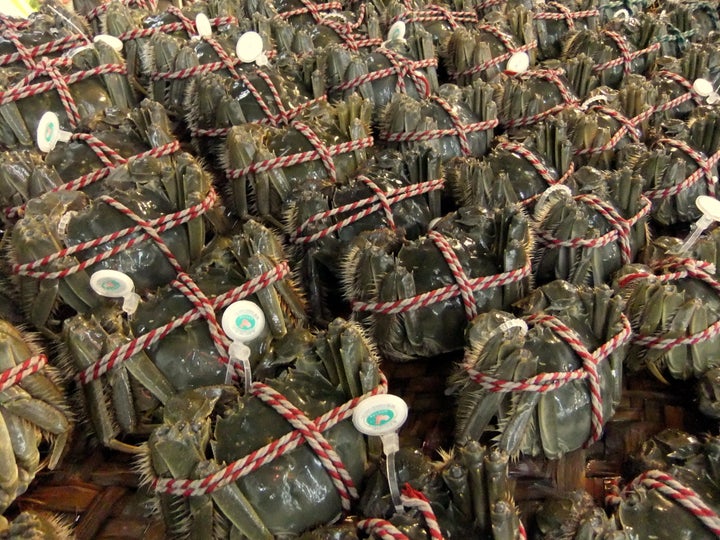
Packed, labelled and ready to be sold for cooking.
Hairy Crab is revered for its beefy claws, succulent meat and bright orange roe. Take advantage of the harvest when they’re in season: male crabs, with more meat, are best enjoyed early in the season (Sept -Oct), while females (with roe) are best eaten later in the season (Nov- Dec). The preferred cooking method is to steam but sautéing is also popular. Because it’s an expensive food, there have been counterfeit crabs on the market — so for consumer protection, each one sold is “certified” with a tag bearing a unique serial number. It will confirm where the hairy crab was caught: Suzhou’s Taihu or Yangcheng Lakes, the prime locations for harvesting these quality crustaceans.
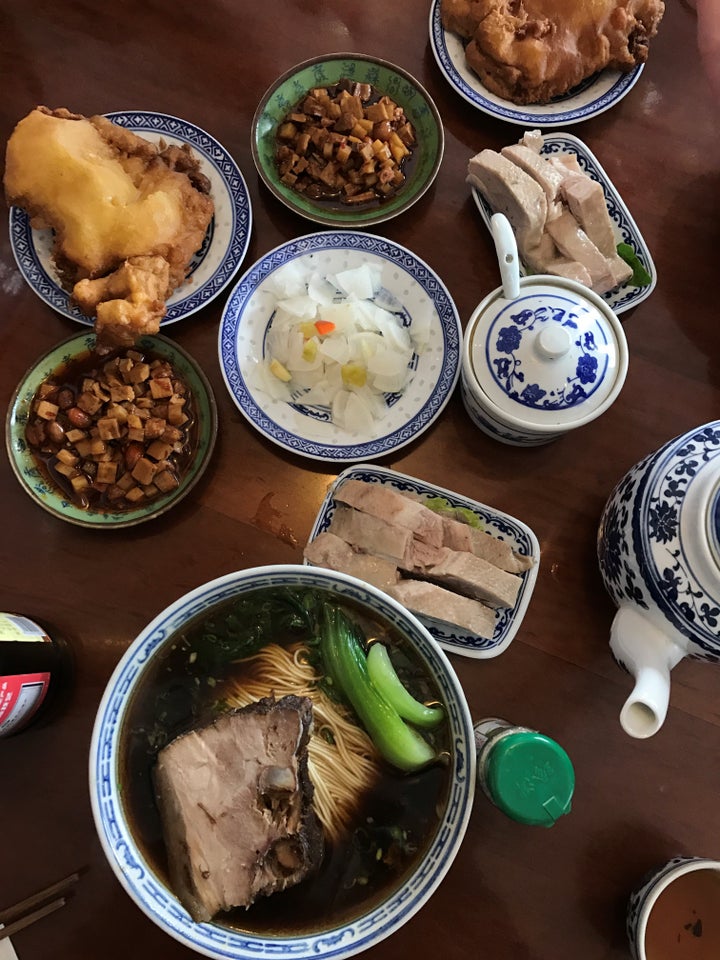
Aozao noodles with a bevy of accompaniments: duck, pork belly, radish, pork cutlet.
Aozao noodles pictured above are a nourishing, hearty dish. The broth is the key to this specialty - everyone has their own rendition to elevate flavors but the foundational keys include the “five hot” rule: hot bowl, hot soup, hot oil, hot noodles and hot toppings. The broth is created by either simmering pig bones, chicken meat, or duck meat to extract flavor. The ruddy color comes from luzhi, a kind of red thick gravy made of meat stock that’s added to the broth. Dragon beard noodles - slender, springy strands - are the preferred accompaniment to this dish. Although the steaming bowl comes with a meaty slab of braised pork belly, it may not be enough for those carnivorously-inclined, so those with such a predilection are welcome to add toppings known as mianma - which include deep fried pork cutlet or fish, sliced duck breast, and shrimp.
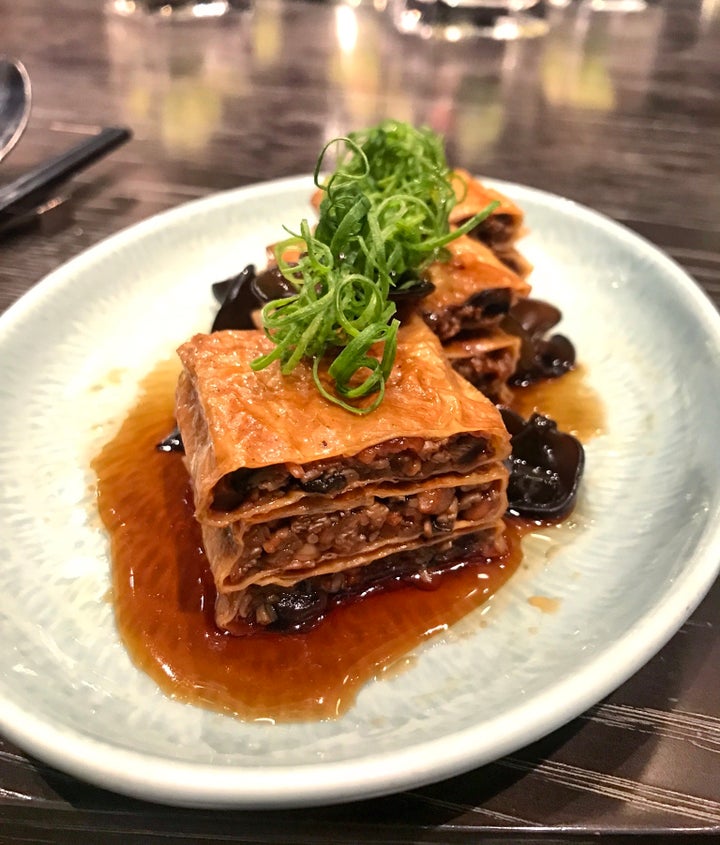
Braised Bean Curd stuffed with mushrooms.
Braised Bean Curd are all at once delicate and sturdy. The bean curds skins are cooked a bit like pasta sheets, then laid out thinly and filled with a mixture of umami-leaden mushrooms. It gets wrapped up like a parcel, shallow fried, and then sliced; to finish, it sits in a sweet, soy sauce mixture. These have a delightful crispiness that gives way to creamy, earthy fungi filling.

Shelled fresh shrimps are a cold tapas-style dish.
Shelled fresh shrimps, typically served in the beginning stages of a multi-coursed meal, are similar in taste to the cold shrimp cocktail dishes in North America; but here, they’re not only daintier in size - they arrive in a shallow pool of tangy, vinegary sauce. They’re a tad taxing to pick open - although you can opt to eat them in the shell as is; regardless of how you choose to devour them, they’re meaty, perky in texture, and full of sweetness.
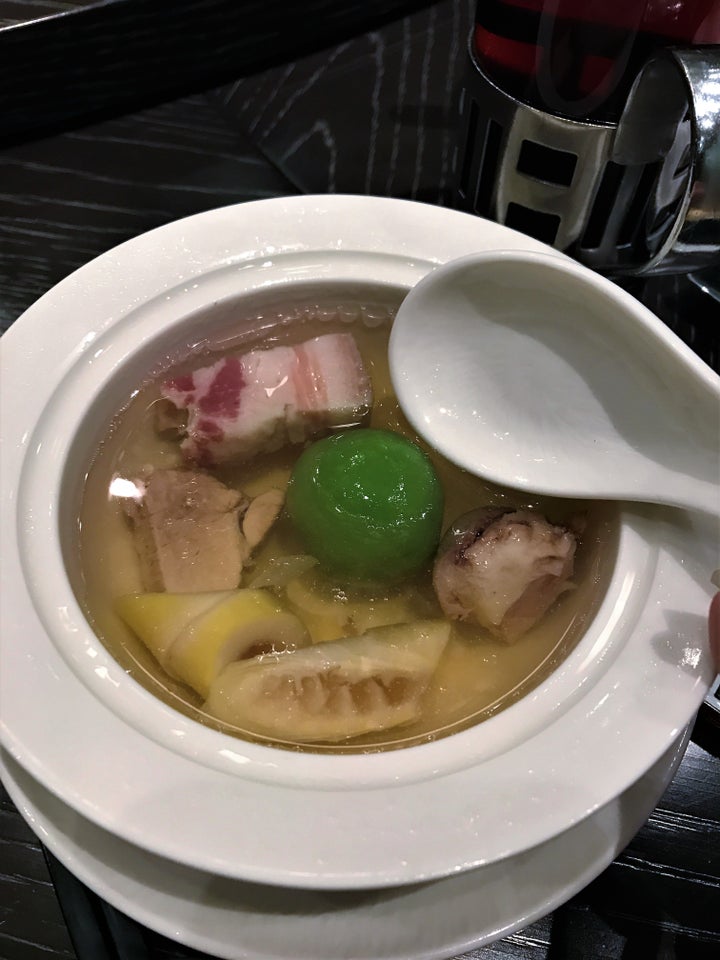
Yan Du Xian
Yan Du Xian Soup is a clean and cleansing consommé whose origins actually hail from Shanghai — but Suzhou locals have adapted the dish to suit their own palates. Traditionally, ham hock, bamboo shoots, and tofu skin knots are used - but here - the sweet (pork-based) broth is counterbalanced with a melange of additional textures: crunchy lotus root, fat-ridged pork belly, and a supple dumpling made of rice flour.
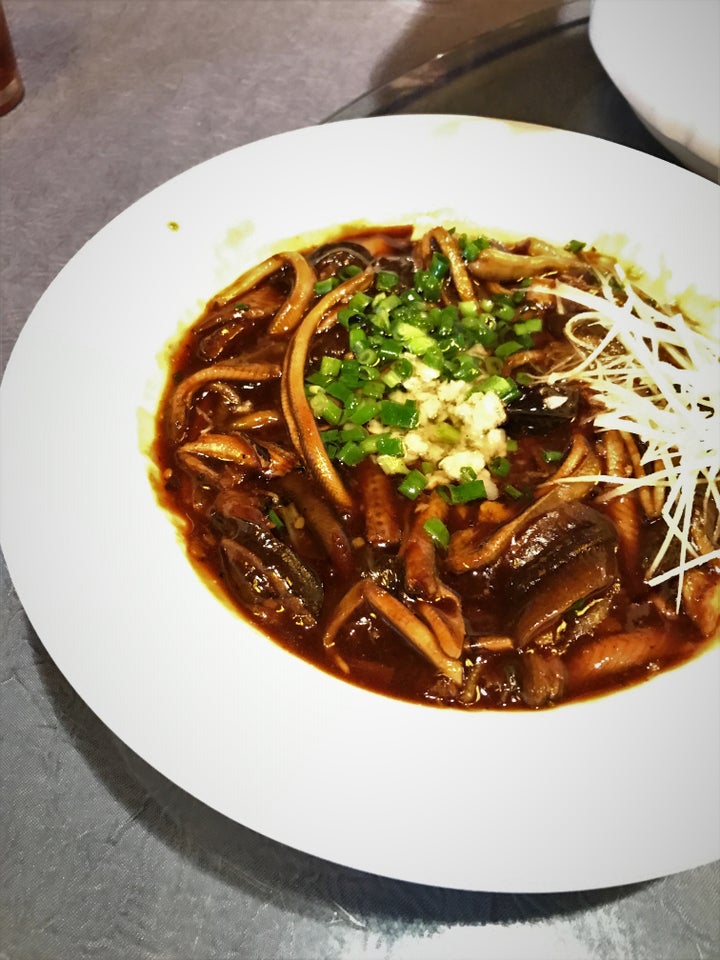
Stewed Shredded Eel
Sticky-sweet eel threads are a famed dish from the Jiangsu area. Chefs and locals will prepare the dish using river eels which have a black back and white abdomen. Despite the fine cut, the eel has a firm, meaty flesh with slightly sweet taste; this is further enhanced with the tangy and spiced sauce it sits in. It’s best devoured with a bowl of snow-white rice.
